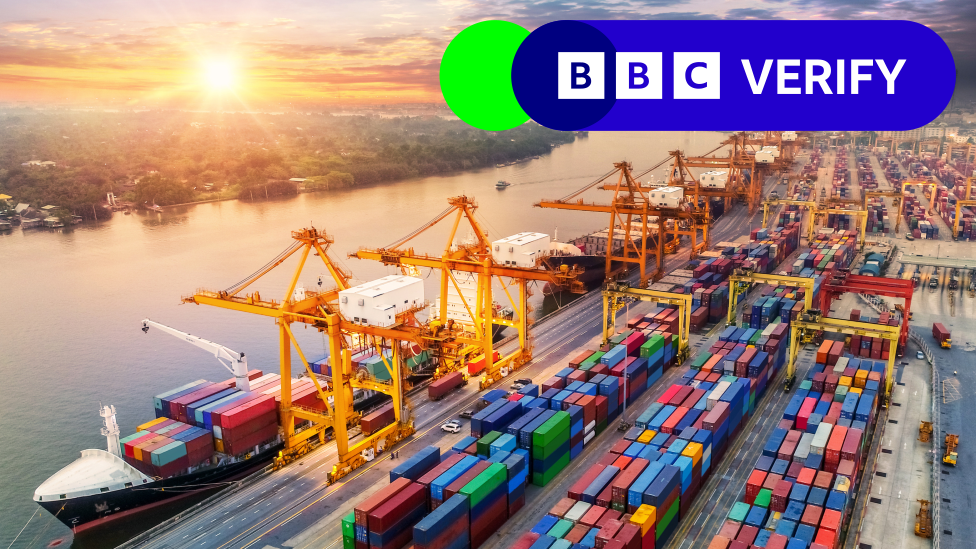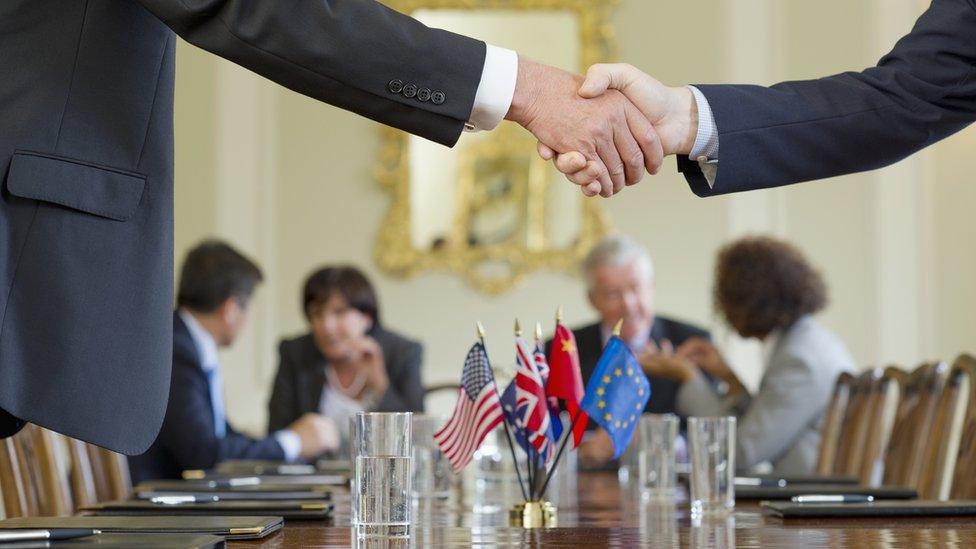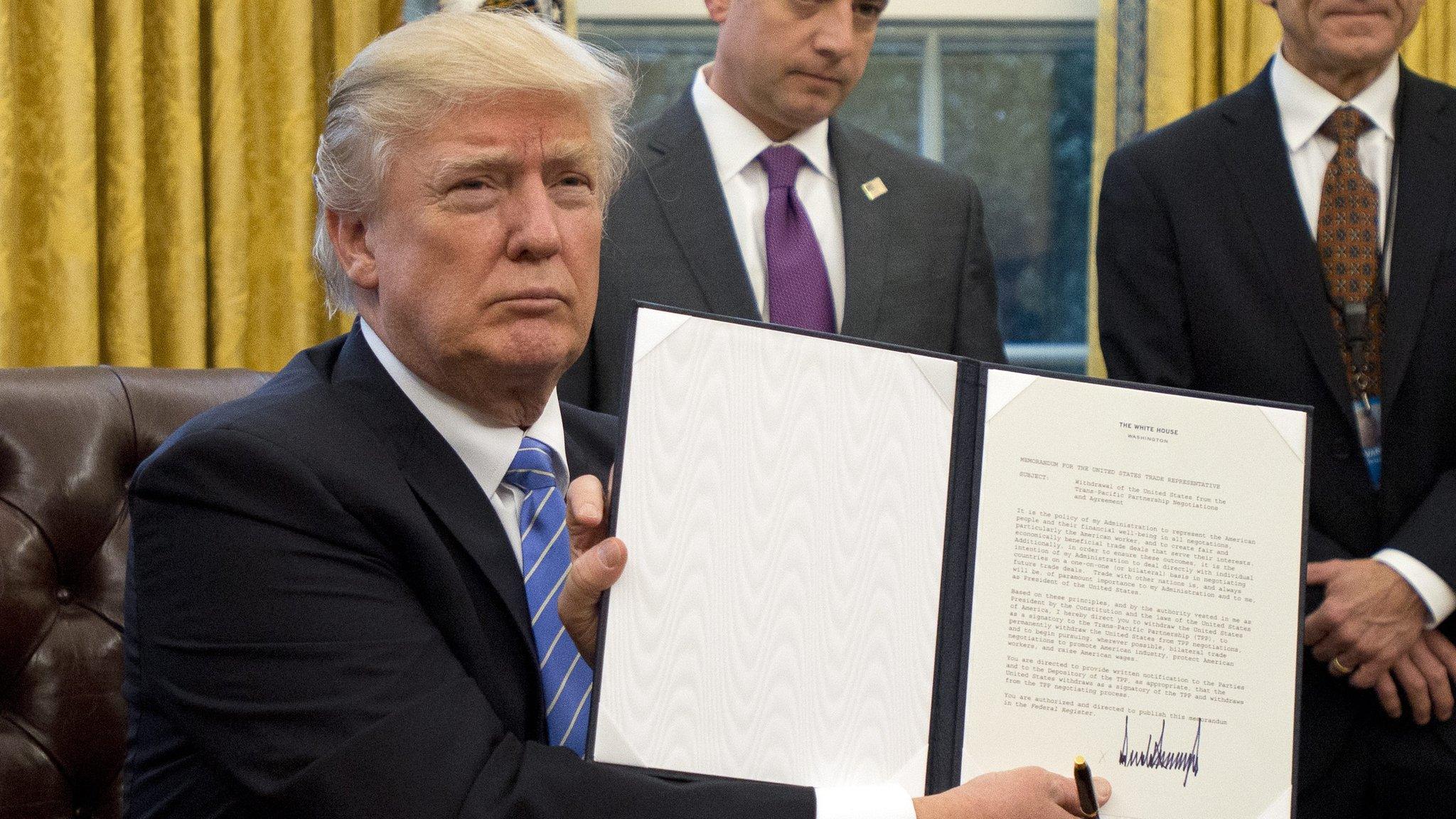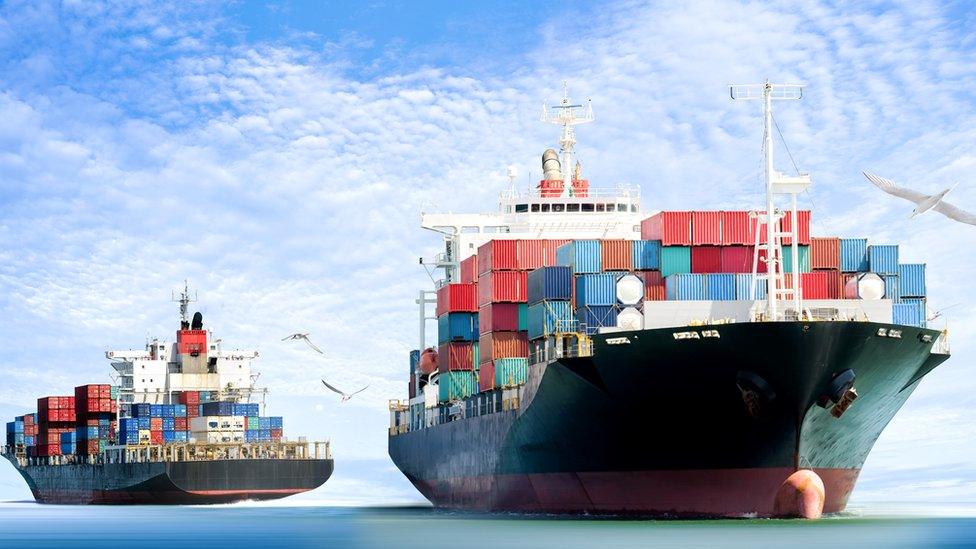UK applying to join Asia-Pacific free trade pact CPTPP
- Published
International trade secretary Liz Truss says Asia Pacific countries "will provide big markets" in the future for British products
The UK will apply to join a free trade area with 11 Asia and Pacific nations on Monday, a year after it officially left the EU.
Joining the group of "fast-growing nations" will boost UK exports, the government says.
The Comprehensive and Progressive Agreement for Trans-Pacific Partnership - or CPTPP - covers a market of around 500 million people.
But they are harder to reach than neighbouring markets in Europe.
Members include Australia, Canada, Japan and New Zealand.
Brunei, Chile, Malaysia, Mexico, Peru, Singapore and Vietnam are also founder members of the bloc, which was established in 2018.
"In future it's going to be Asia-Pacific countries in particular where the big markets are, where growing middle-class markets are, for British products," International Trade Secretary Liz Truss told the BBC's Andrew Marr.
"Of course British businesses will have to reach out and take these opportunities, but what I'm doing is I'm creating the opportunities, the low tariffs, removing those barriers so they can go out and do that."
Joining the bloc would reduce tariffs on UK exports such as whisky and cars, as well as service industries, she said.
However the immediate impact is likely to be modest as the UK already has free trade deals in place with several CPTPP members, some of which were rolled over from its EU membership. The UK is negotiating deals with Australia and New Zealand.
In total, CPTPP nations accounted for 8.4% of UK exports in 2019, roughly the same proportion as Germany alone.
The US was originally in talks to be part of the CPTPP, but former President Donald Trump pulled out when he took office.
If the new administration in Washington were to reconsider the CPTPP, that would make membership much more attractive to the UK. It could allow a much closer UK-US trading relationship, without waiting for a bilateral trade deal to be negotiated.


Exactly a year after it said goodbye to the EU, the UK is eying a new trading club.
It sounds a win-win: those Pacific Rim nations represent 13% of global income and 500 million people - and the UK would retain the freedom to strike deals elsewhere. There'd be agreement on how standards and regulations are set (with minimums to be adhered to) - but they wouldn't need to be identical.
In practice, however, the short-terms gains for households and business would be limited. The UK already has trade deals with seven of the 11 nations - and is pursuing two more. In total, CPTPP nations account for less than 10% of UK exports, a fraction of what goes to the EU.
This deal would however deepen some of those ties - and allow UK manufacturers who source components from multiple nations in the bloc some benefits under "rules of origins" allowances.
But the real boost could come in the future, if others join - in particular the US, as President Biden has hinted. That would give the UK that hoped-for trade deal with America - within a trading bloc wielding considerable power on the global stage.

The UK is the first non-founding country to apply to join the CPTPP and, if successful, would be its second biggest economy after Japan.
The free trade block aims to reduce trade tariffs - a form of border tax - between member countries.
It includes a promise to eliminate or reduce 95% of import charges- although some of these charges are kept to protect some home-made products, for example Japan's rice and Canada's dairy industry.
In return, countries must cooperate on regulations, such as food standards. However, these standards and regulations do not have to be identical, and member countries can strike their own trade deals.
The government was putting place strategies that would "deliver for Britain in 2030 and 2050", Ms Truss said. She said services, robotics, data and digital industries were particularly set to gain, which could lead to more UK jobs.
Membership will also offer the potential for faster and cheaper visas for business people, the government said.
The formal request to join will be made on Monday, with negotiations expected in the spring.


- Published15 December 2024

- Published26 January 2024

- Published19 January 2021

- Published24 January 2017

- Published8 March 2018

- Published28 December 2018
